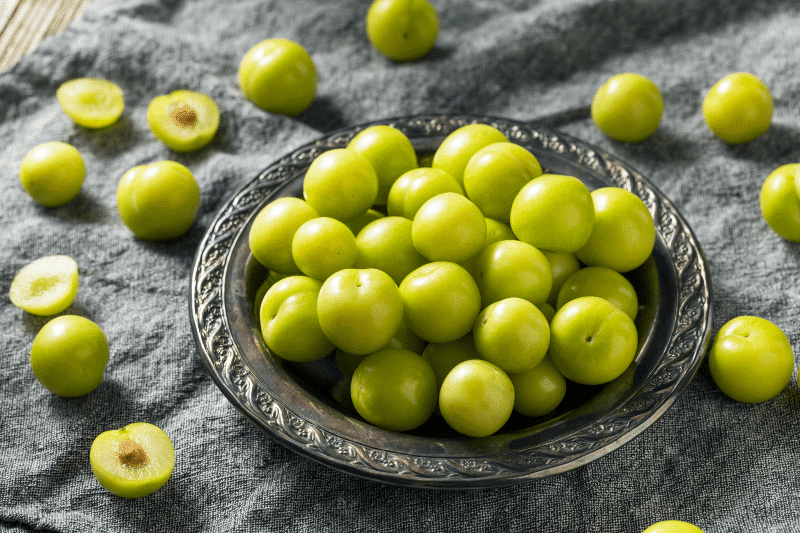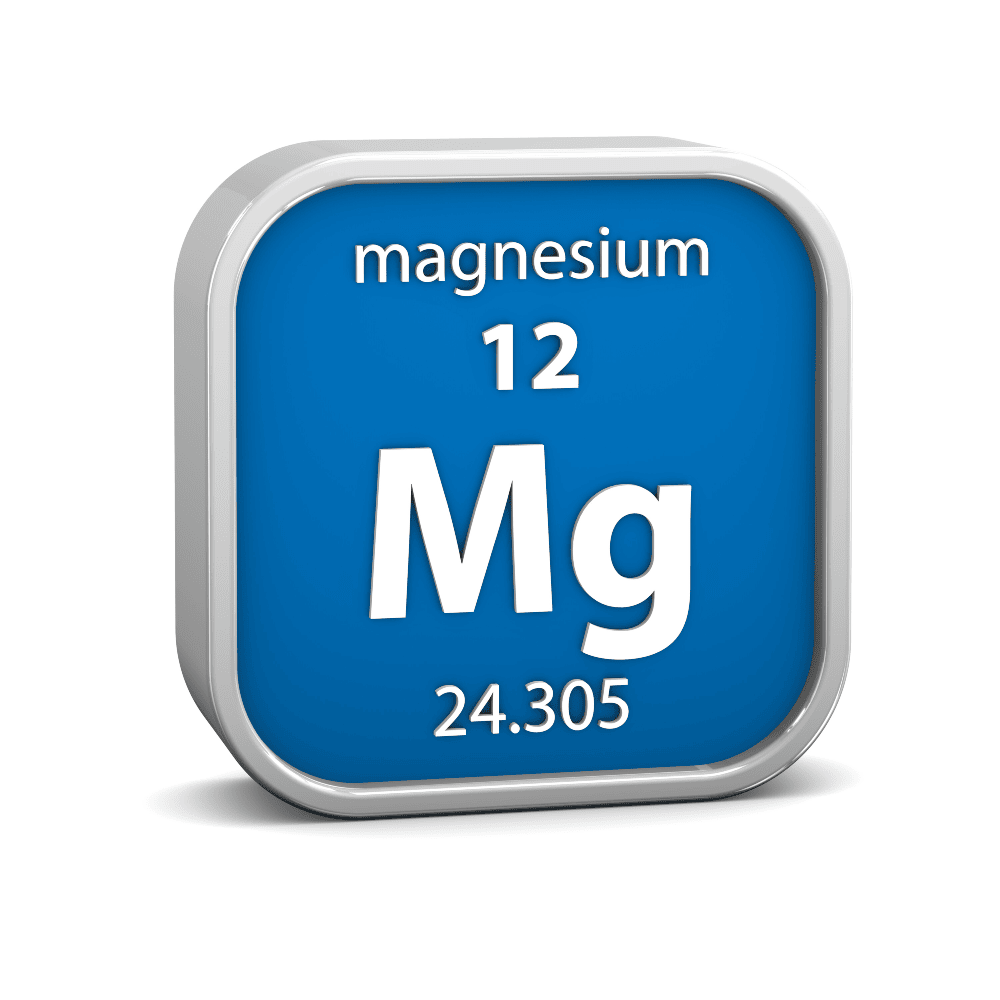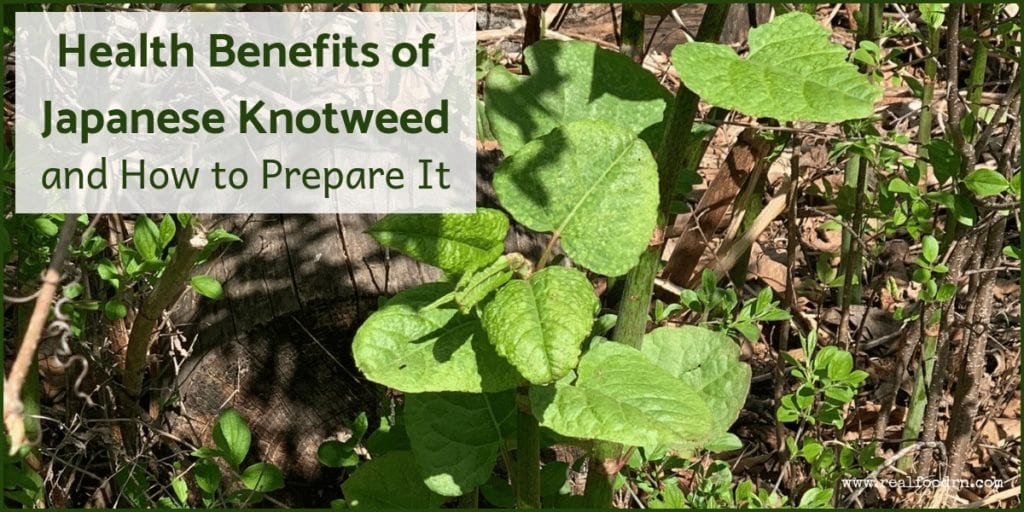
When you hear “Japanese Knotweed,” you may grit your teeth or say a few colorful words. Most of us in the West think of it only as an evasive, indestructible weed. Even setting it on fire doesn’t kill it! It comes up the next year as if nothing had happened. The photos in this post were taken in my Dad’s yard where the stuff is growing everywhere!!! He told me to come harvest some, so naturally, I had to look up why I would want to pick this stuff — and also if and why I wanted to actually eat it!
What is Japanese Knotweed?
Fallopia japonica or Japanese Knotweed might be an invasive weed in some countries, but it is enjoyed throughout Asia as a tasty and nutritious vegetable. I guess the peoples in the East decided if you can’t beat it, you might as well eat it. Japanese Knotweed has been used as food and medicine for centuries in Japan, China, and Korea. Its main uses are as a nutritious spring vegetable, in supplements, and in agriculture and beekeeping. It turns out, it’s not only tasty and nutritious, but the hollow stalks are a favorite for certain types of bees to make their homes.
As a hardy herbaceous perennial, Japanese Knotweed needs minimal care to thrive in your garden.
Why is it Good for You?
Japanese Knotweed has high concentrations of resveratrol, a potent antioxidant which is also present in lesser quantities in grapes, mulberries, peanuts, and red wine. It is also a good source of Vitamins A and C and contains potassium, manganese, zinc, and phosphorus.
Japanese Knotweed’s high levels of resveratrol have been used as a preventative against cognitive disorders like dementia and Alzheimer’s disease, by neutralizing free radicals and eliminating plaque, and keeping neural pathways energized. Resveratrol can also have a positive impact on heart health, lowering cholesterol, and balancing blood pressure. I actually take a daily supplement (prescribed by my functional medicine doctor) that is made from Knotweed and is considered a great source of resveratrol, called Resvero. Always consult with your practitioner before taking any new supplements, however.
The antioxidant properties of Japanese Knotweed mean it is excellent for reducing inflammation, and it has been used to treat inflammatory conditions like arthritis, gout, joint disease, and skin diseases. I take it for inflammation, based on my 23andme genetic report I have a higher genetic tendency towards chronic low-grade inflammation. As a paste, Japanese Knotweed can reduce the pain and swelling of burns, irritations, and rashes. Used as a mouthwash, it can be used to help gingivitis.
It is also good for eye health, liver disease, and digestive problems. In Japan, it is used as a mild laxative. Herbalists have found Japanese Knotweed to be effective in treating Lyme disease, and science is working to prove this through research.
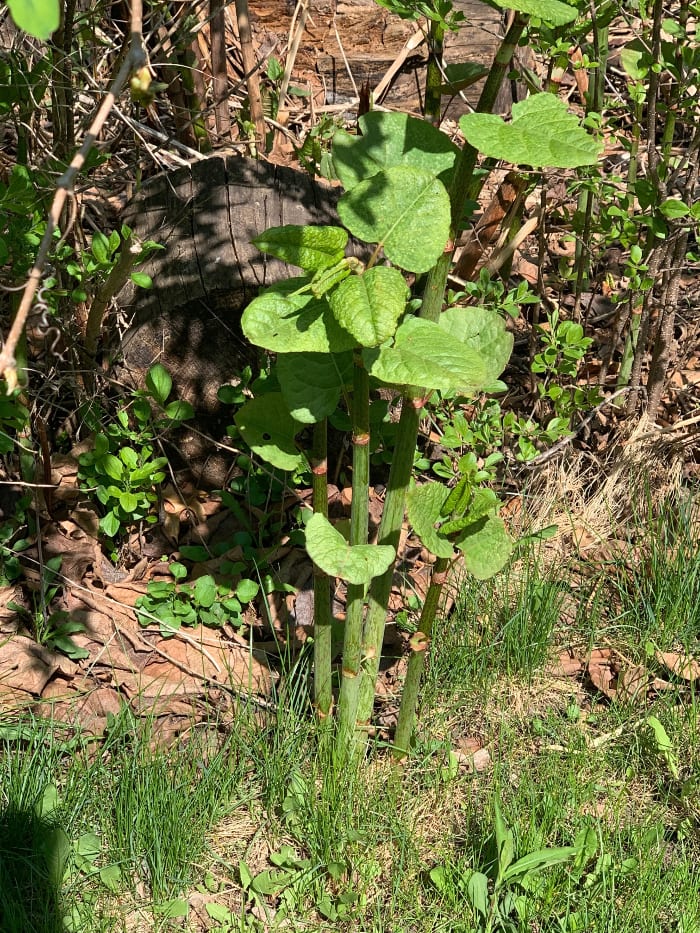
How Do You Grow It?
Check with your local regulators, because in many states it is illegal to plant Japanese Knotweed. However, that doesn’t mean you can’t harvest knotweed that is already in your yard, in the woods, or on your property. Especially as it is almost impossible to eradicate.
Japanese Knotweed grows at an astonishing rate – around three feet a month – and sends its roots down around ten feet. It can even grow through concrete! And it self-seeds lavishly.
If you don’t want to grow it yourself, they also sell it in powder form online. So you can just add it to smoothies.
How Should You Prepare Japanese Knotweed?
Although technically it belongs to the Buckwheat family, the taste of Japanese Knotweed resembles rhubarb. Like rhubarb, you can only eat certain parts of the plant and only at certain times of the year. In Japan, China and Korea it is eaten as a spring vegetable for its restorative properties.
In the northern hemisphere, it is best eaten from mid-April through May while the spring shoots are young and tender, and before the stems have become hard and woody. Shoots that are perfect for eating should be less than six inches in length and a red/purple mottled color. You should be able to harvest the stems easily, without needing a knife. Stems do not need peeling and can be frozen without blanching for at least six months.
Japanese Knotweed can be substituted for rhubarb in dishes such as jellies, syrups, crisps, cakes, and pies. You can also steam the shoots and young leaves and eat as you would asparagus, straight up or in quiches, soups, risottos, stews, sauces, and chutneys.
You can make Japanese Knotweed puree by boiling the stems with water and sugar or sugar substitute until the pieces are soft. Add lemon juice and more sweetener to taste. Use as a dessert, pie filling, or include in muffins, bread, or cakes. You can even add it to your breakfast smoothie or juice.
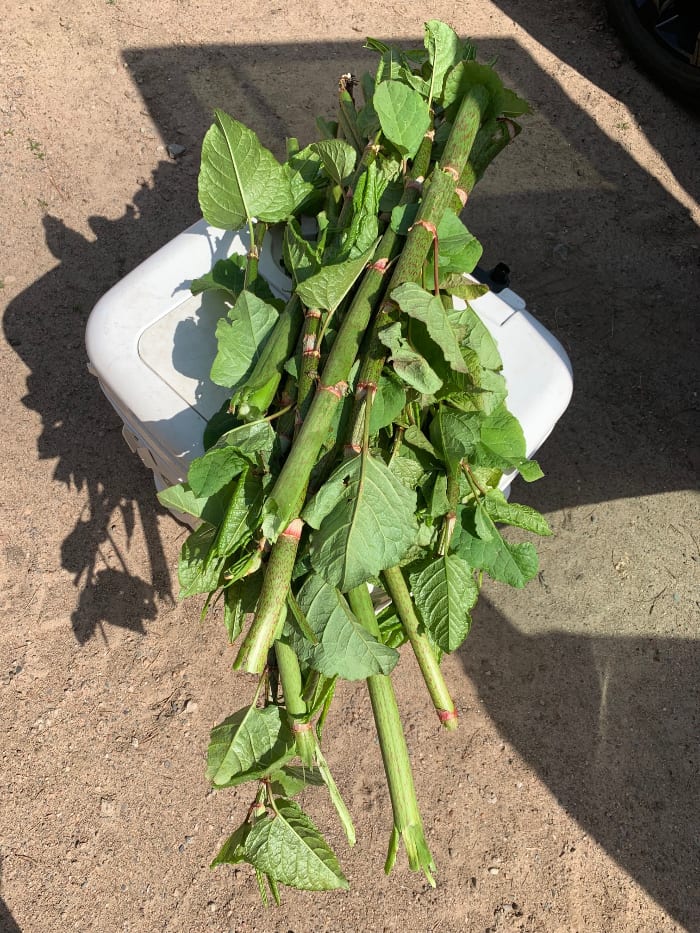
Is Japanese Knotweed Safe?
Japanese Knotweed is high in oxalic acid, so if you’re allergic to spinach or rhubarb, you should also avoid knotweed.
If you have a chronic medical condition or take regular medication, check with your health professional before eating Japanese Knotweed. Likewise, if you are pregnant or breastfeeding, the safest option is to consult your doctor before eating anything outside your usual diet.
Before you harvest Japanese Knotweed, you should check to make sure it hasn’t been treated with herbicide. It’s probably better not to take Japanese Knotweed from roadsides or places where you’re unsure of weed control practices.
Adding Japanese Knotweed to your diet is a cheap and easy way to up your consumption of healthful antioxidants and minerals. Because it’s so versatile, adding flavor and nutrition to both sweet and savory dishes, there’s no end to the recipes you can create with it.
CLICK HERE to Pin this post
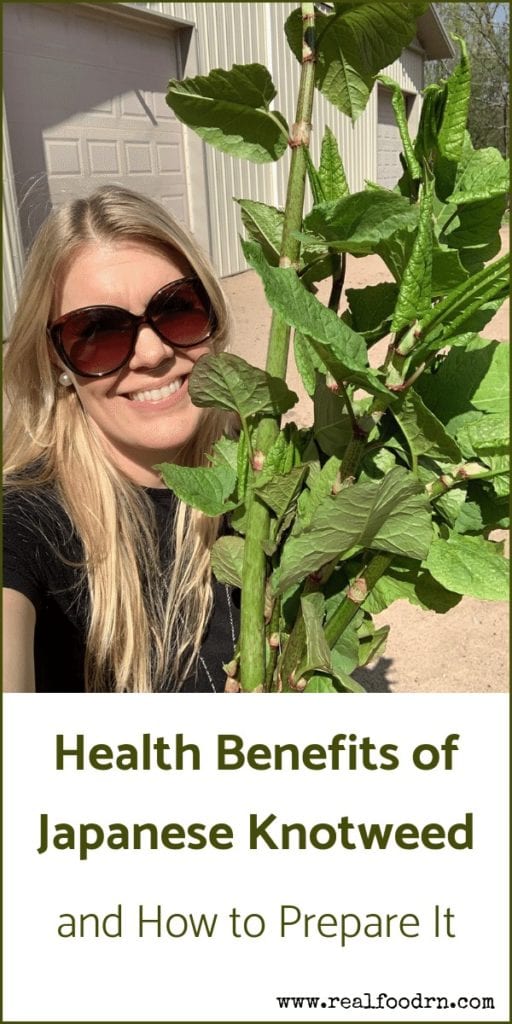
References
- https://www.organicfacts.net/health-benefits/herbs-and-spices/japanese-knotweed.html
- https://practicalselfreliance.com/japanese-knotweed
- https://www.gaiaherbs.com/blogs/herbs/japanese-knotweed
- https://drhealthbenefits.com/herbal/herbal-plant/health-benefits-of-japanese-knotweed
- https://www.webmd.com/vitamins/ai/ingredientmono-537/knotweed
- https://environetuk.com/blog/Is-Japanese-knotweed-safe-to-eat
- https://tacticalintelligence.net/blog/wild-edibles-how-to-eat-japanese-knotweed.htm
- https://www.theguardian.com/lifeandstyle/2016/feb/21/eat-japanese-knotweed
- https://www.eattheweeds.com/japanese-knotweed-dreadable-edible
- https://www.motherearthnews.com/real-food/conquer-invasive-japanese-knotweed-by-eating-it-zbcz1504
- https://medium.com/@LodgeMarybeth/health-benefits-of-japanese-knotweed-48c445109536







